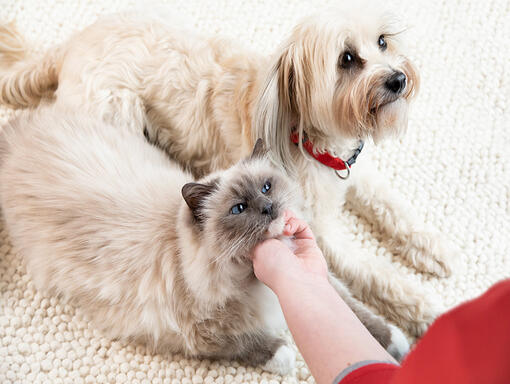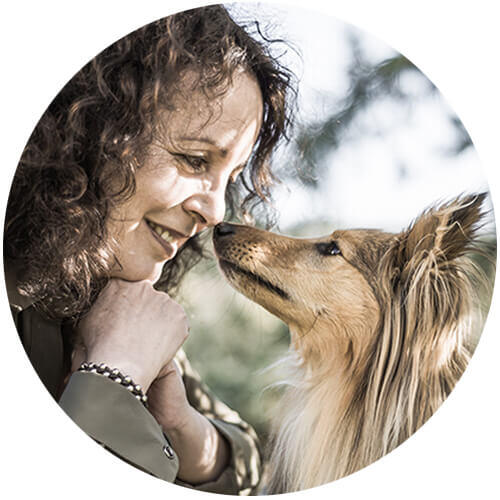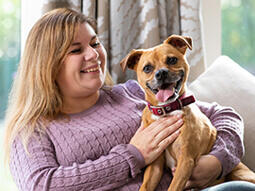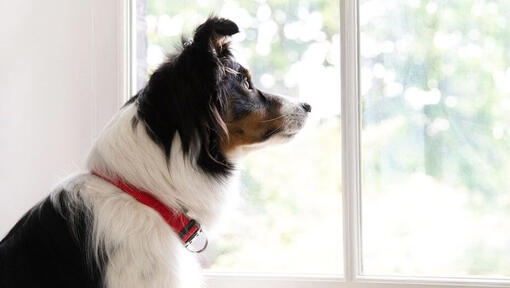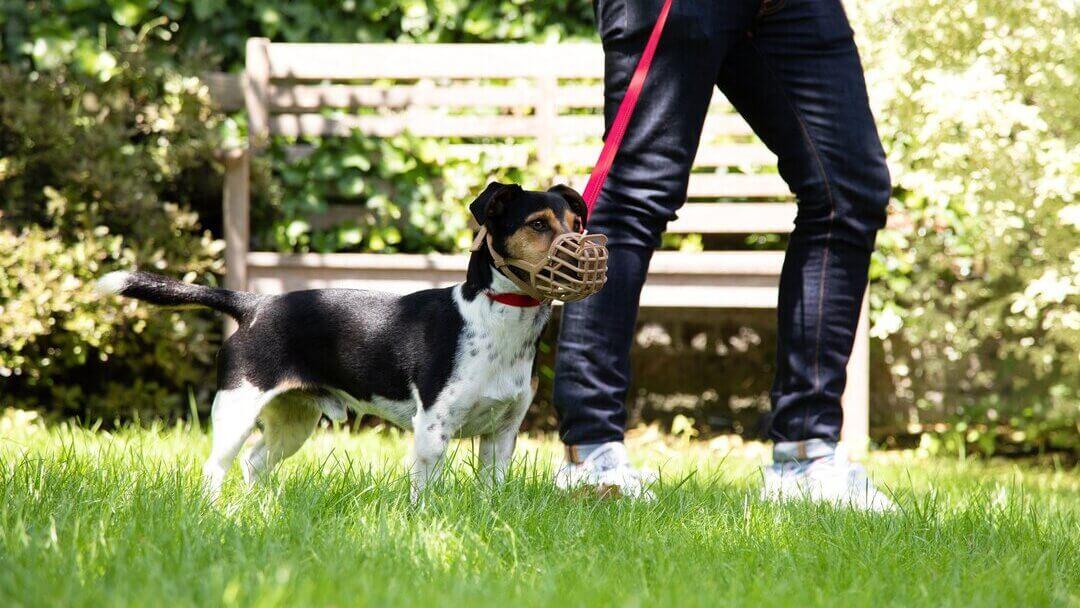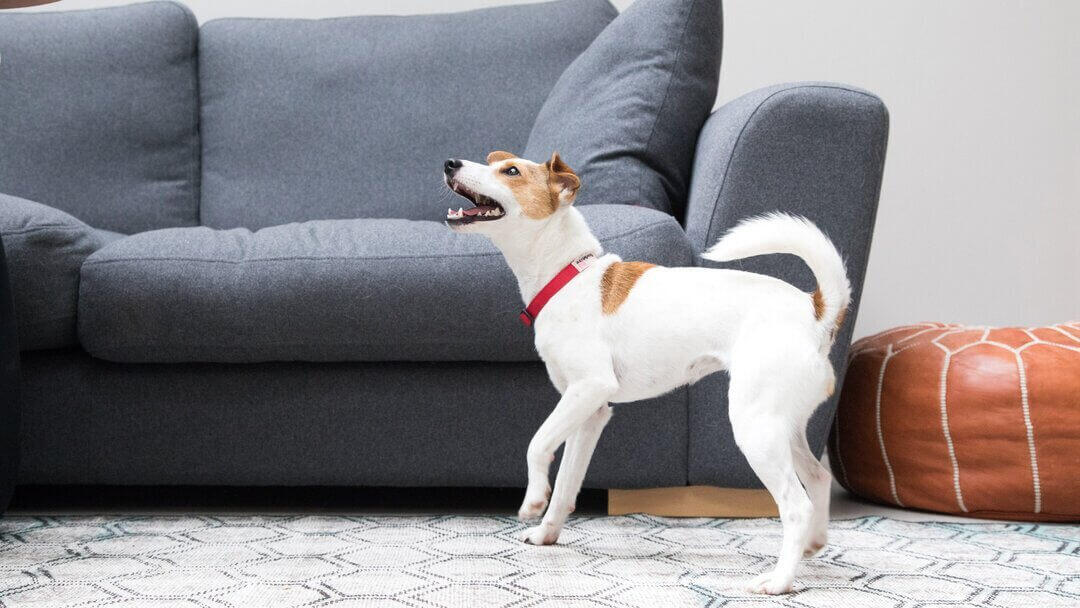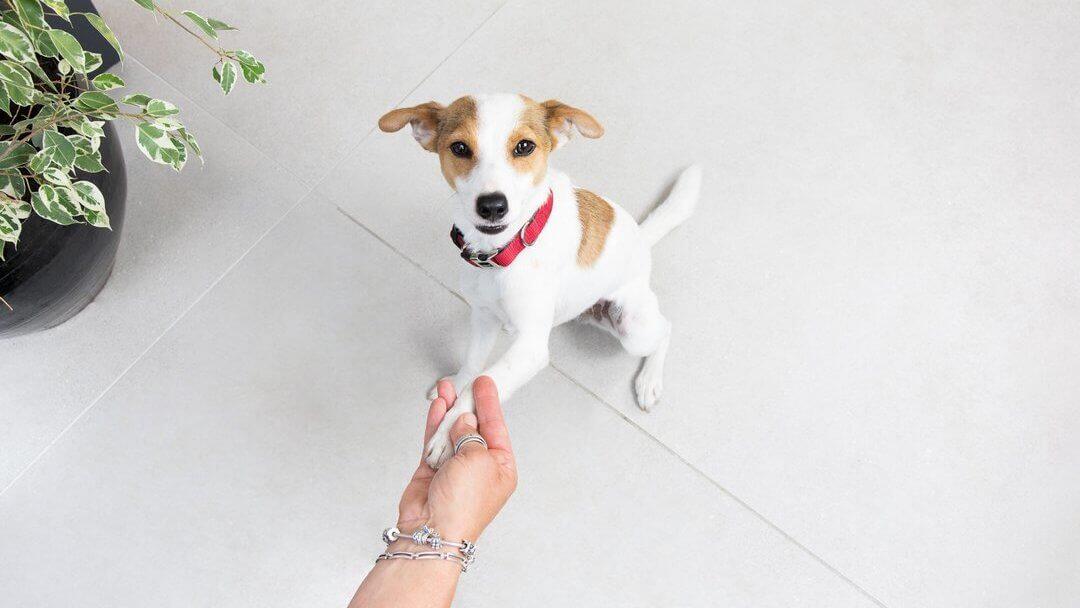Is Your Dog Scared? A Guide to Understanding and Overcoming Canine Fear
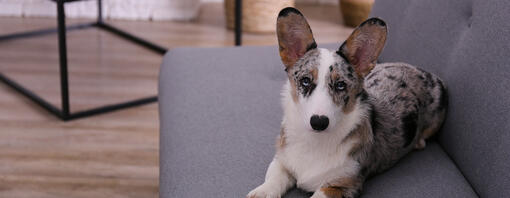
Whether your dog is curious and fun-loving, affectionate to all, or a bit more selective about their friends, and whether they are generally relaxed, laid back or quickly excited – all dogs can experience fear.
Some dogs will be more predisposed towards fear and anxiety as a result of genetics, prior learning or trauma, and some will be naturally more resilient with great bounce-back skills, but ultimately, frightening experiences or events can happen to anyone – dog or human.
Every dog has a different ‘personality’ – some of this is related to their breed type and the traits they’ve been selectively bred for – often for generations. Some of it will be down to the specific genetics of their parents (yes, fearful parents can produce fearful offspring!), and of course, there are the specific experiences, or lack of, that each dog has in the course of their lifetime, along with the training, habituation and puppy socialisation they receive (or not) from the humans in their life.
On top of this, there are the day-to-day stressors each dog experiences that colour how well they can cope with scary or unpleasant events. A dog who leads a very laid-back relaxed life feels very secure and is rarely stressed and as such, is going to handle a potentially frightening event far better than the dog who is constantly pushed over its stress threshold, who is experiencing acute or chronic pain, or who does not feel secure.
The more we take time to understand our dogs, understand what may cause fear, what may be affecting their ability to tolerate distressing events, and of course, what fear may look like in them – the better we can avoid them being scared and if they are, we can recognise it and the better we can help and support them.
Fear in dogs is very often the underlying cause of many behaviour problems, including aggression, so it's essential to address fear first. If fear is not the problem, you’ll not do any harm by assuming it’s there and taking steps to prevent it. Conversely, if fear is the problem but you assume it is not there, and therefore don’t address it, there is the potential to harm, as well as failing to resolve the issue!
Common Fear-Related Behaviour Problems In Dogs:
- Separation Related Problems – these include fear of being alone or isolated, and also fear of owner’s return.
- Noise Phobias – fear of strange or sudden noises including fireworks and storms.
- Fear aggression – (either dog to dog or dog to human) comes from fear and then using aggressive behaviours in an attempt to create more space or end an interaction.
- Fear of pain – this may be actual current pain or historic pain. Often seen as a fear of an object such as a harness, a location such as a doorway or a vehicle, but may appear to be stubbornness, rudeness, defiance or even described as ‘dominance’ when the dog tries to avoid doing the action that causes or historically has caused pain, but the owner does not realise this.
What does fear in dogs look like?
We assume fear looks like a cowering dog, one paw raised, back lowered, ears back, cringing away from the frightening thing. Or else it is the dog running away in a blind panic, or scrabbling to get out and away if trapped.
Fearful dogs may well look like that, however they very frequently don’t and it is these dogs whose fear is mistaken for something else, which often leads to further behaviour problems, and even bite incidents.
Signs of fear in dogs may include:
- Pacing.
- Panting.
- Shaking/trembling.
- Inability to settle.
- Attempting to hide.
- Salivation
- Yawning.
- Licking lips.
- Whale eye (showing whites of eyes).
- Lifting a paw.
- Loss of toilet training.
- Barking
- Growling.
- Aggression.
Less obvious signs of fear in dogs
- Sniffing around.
- Snatching at food rewards but not properly eating them.
- Inability to eat previously desired foods.
- Subdued or ‘quiet’ behaviour.
- Confident looking aggressive displays – lunging, barking, chasing.
- Giddy silly bouncy behaviour.
- Inability to listen.
- Reluctant to move.
- Stubbornness.
- Refusing to comply with known cues.
- Hard stares.
- Lip curling.
- Freezing.
- Whining/crying.
- Piloerection (hair along the shoulders and back raised).
This is not an exhaustive list of less-obvious fear in dogs signs; however, these should be taken in context – context is everything! The dog who is sniffing around the spot where food was recently spilt could simply be picking up that interesting scent, or the dog who is giddy and bouncing about might just be excited.
The environment is important too – a dog growling while playing tuggy games at home almost certainly doesn’t mean the same thing as a dog growling from under a bench in a busy shopping centre while strange people try to reach under and touch them!
Our dogs are much more likely to be happy and relaxed, confident and secure, in our homes or in very familiar places, around trusted family, where nothing bad has ever happened. In new, or very busy, overwhelming places, that confidence may well vanish and now you have an insecure, worried dog who may feel – and so behave - very differently!
We should also consider the choices a dog has, and whether they’re aware of those options.
A loose dog, off lead in a big open space, has many choices; flight – run away, fight – use aggression to drive the threat away, freeze – stay very still and hope the threat goes away or the situation ends, fiddle about – sniff around or be rather silly in the hopes that the situation is defused, deflected or avoided.
A dog on a short lead, in a small space has no option to run away, and limited ability to freeze or fiddle about, often leaving ‘fight’ as the only effective option!
Again, context is important, and you may see one or two of these signs, or many. Some dogs will escalate through several ways of trying to communicate their feelings and others may have learned that this doesn’t work, and so will skip some. Others who have learnt through past experiences that nothing else will be effective may go straight to the last…
Typically, fear in dogs has its roots either in a lack of positive associations or a negative association.
This means the puppy who has not been habituated and socialised at the vets – they have not visited just to get some treats and have a fuss, or have perhaps never been to the vets at all (lack of positive associations) – may well be every bit as scared as the puppy who has been to the vets, but every single time, something painful and unpleasant has happened to them (negative associations).
It is easy to fall into the trap of thinking that because nothing we consider frightening or unpleasant has happened, the fear in your dog is not real or is something else (attention seeking, being a wimp, being rude or silly).
- Fear of loud noises.
- Associating an event with a past trauma.
- People changing their appearance.
- Babies can scare dogs too!
Check frequently on how your dog feels
- In new situations or places, be prepared to go to a quieter place, or to leave if necessary.
- Watch your dog’s interactions – some dogs may well not move away from an interaction they’re not enjoying. Fearful dogs may freeze rather than move away so do not rely on them avoiding or leaving a situation they can’t handle.
- Read and watch videos on canine body language, there are a lot available – and watch videos with the sound off so you can focus on the dog and not the narrator (who may be wrong!)
- If your dog growls at you don’t get angry or take offense. Instead, back off, work out what you were doing they didn’t like, and find a conflict-free way to resolve the situation
- If your dog growls at someone else – remove your dog from the situation immediately and find them something calming to do (scattering food in an activity mat or in some grass is a good choice)
- Learn about desensitisation and counter-conditioning – the two options used by behaviourists to address fear.
- If you are concerned about fear and in particular, fear-related aggression, contact a reputable accredited professional behaviourist with experience in fear issues.
Desensitisation and Counter Conditioning
Desensitisation is often misunderstood – it should be a process where the dog is exposed to the thing they’re scared of in such a way that they’re not scared.
This may mean that there is more distance between the dog and the scary thing, the event is far shorter, or the sound is much quieter.
For example, if a dog is scared when someone brings in the vacuum cleaner and switches it on, then to desensitise (DS), it may be that the vacuum is brought into the room (or even just in the doorway if the fear is extreme) for just a few seconds and not plugged in, removed, brought back, removed again and put away. You are looking for the dog to notice it’s there but for it not to be close enough (or for long enough) to trigger a response.
Repeat this several times a week until the dog is not remotely bothered, and then the exposure is increased slightly. So, the new DS session may be the vacuum being brought in for slightly longer or keeping to the same duration, but now it is plugged in and immediately unplugged each time.
It is and it should be, a very tedious and boring process. If this process produces a reaction from the dog or is in any way dramatic - it’s being done wrong! In fact, you are making the fear worse.
Desensitisation is not flooding. Flooding, where the animal is exposed to something terrifying until they stop reacting, is ineffective and cruel.
Counter conditioning (CC) is necessary where it’s not possible to desensitise – perhaps the mere sight of the vacuum cleaner pushes the dog into fear. So, in this case, we might place the vacuum down the very far end of a large room, bring in the dog and immediately reward them with extremely high-value food, and then take them away again. Here, potentially we would not even wait to see if the dog has spotted the vacuum, to be absolutely certain we’re not making the problem worse and pushing the dog too far.
It’s important that the food is not used to lure the dog closer to the scary thing – nor is the dog required to do anything in order to receive the food beyond being in the same room as the vacuum cleaner.
To progress, we might have them stay longer, or move the vacuum side to side slowly, we might toss the food around so the dog is constantly reminded they can move further away from the trigger for their fear (this really helps with dogs who forget they can do this and freeze!)
In order to overcome fear in your dog, it can often be helpful to have the backup of an accredited experienced behaviourist who can work with you to identify triggers that create a fear response in your dog, and create a behaviour medication programme to help make that fear a thing of the past.
Explore our dog brands:
